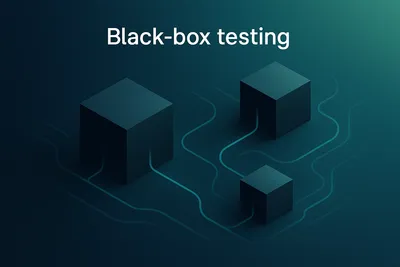
Black-Box Firmware Testing: Maximum Value with Minimal Effort
Black-Box Firmware Testing: Maximum Value with Minimal Effort
Choosing the right testing approach is crucial for robust firmware validation. At FirmwareCI, we intentionally adopted a black-box testing strategy to provide a practical, versatile, and highly effective method of validating firmware behaviors and interfaces. Here's why this architecture matters and how it benefits engineering teams evaluating firmware-testing tools.
What is Black-Box Testing in Firmware Validation?
Black-box testing involves testing firmware without accessing its internal structures, source code, or specific implementation details. Instead, tests focus on the firmware's external behaviors, responses, and interactions via interfaces exposed to end users.
FirmwareCI applies black-box testing techniques to interfaces commonly used in firmware management, including:
- IPMI (Intelligent Platform Management Interface): Validating system management and monitoring functionalities.
- Redfish APIs: Ensuring the RESTful management interfaces behave correctly and securely.
- UEFI/BIOS Setup Interfaces: Verifying the system configuration, security settings, and boot behaviors.
- SSH or Serial Consoles: Checking command-line interactions and responses, vital for debugging and configuration.
Why Choose Black-Box Testing?
Practicality
Black-box testing doesn't require access to firmware source code, enabling you to start testing immediately, regardless of firmware origin—proprietary or open source. This approach eliminates barriers related to code ownership, access, or complexity.
Real-World Validation
FirmwareCI's black-box tests simulate real-world scenarios and user interactions, ensuring the firmware behaves as expected in actual deployment conditions. The results directly reflect user experience and system stability.
Agnostic and Universal
Our method supports all firmware from all vendors, regardless of internal implementations or programming languages. This vendor-agnostic approach streamlines testing across diverse hardware and firmware ecosystems.
Efficiency and Scalability
Black-box tests are easily repeatable and scalable. With no source-level dependencies, tests can be uniformly applied across many devices and firmware builds, drastically improving coverage and speed.
Black-Box vs. White-Box Testing: A Balanced Perspective
White-box (code-based) testing involves inspecting source code directly, using static analysis tools and code-coverage metrics. It is especially beneficial in high-security fields where deep insights into code logic and security vulnerabilities are crucial. However, white-box testing also presents some challenges:
- Dependency on Code Availability: Requires access to source code, limiting its practicality for proprietary firmware.
- Complexity and Time Consumption: Understanding and maintaining extensive test suites for large firmware codebases can be challenging and costly.
In contrast, black-box testing focuses on:
- Independence from Source Code: No need for code access or detailed code-level understanding.
- Realistic Test Scenarios: Tests directly reflect real-world usage scenarios and end-user experiences.
- Rapid and Scalable: Quickly scaled across multiple devices and firmware versions, providing faster and more relevant feedback.
Both testing methodologies have distinct advantages, and the choice often depends on specific project requirements. However, black-box testing generally provides the most practical value with minimal upfront effort.
Metrics That Matter
Typical metrics highlighting the effectiveness of black-box testing with FirmwareCI include:
- Reduction in Testing Setup Time: Teams using black-box testing report significant decreases in initial setup complexity.
- Increased Testing Coverage: Broader scenario coverage compared to limited white-box unit tests.
- Faster Bug Detection and Resolution: Bugs impacting real-world user scenarios surface earlier, reducing overall debugging time.
FirmwareCI's Conceptual Approach
FirmwareCI is architecturally designed around black-box testing principles to ensure practicality, flexibility, and efficiency. The conceptual pillars of FirmwareCI's black-box approach are:
- Vendor-Agnostic Testing: Supports all firmware types without code or SDK dependencies.
- User-Centric Validation: Tests reflect true user interactions and expectations, improving overall product quality.
- Rapid Adaptability: Easy integration into existing CI/CD workflows, providing quick feedback loops and robust validation.
Conclusion
While white-box testing has distinct advantages, particularly in high-security environments, black-box testing often provides the highest practical value with minimal effort, making it an ideal choice for many firmware validation scenarios. FirmwareCI's commitment to this practical and versatile testing approach empowers teams to deliver robust, secure, and reliable systems effectively.
Ready to leverage black-box testing for your firmware projects? Get started with FirmwareCI today!


